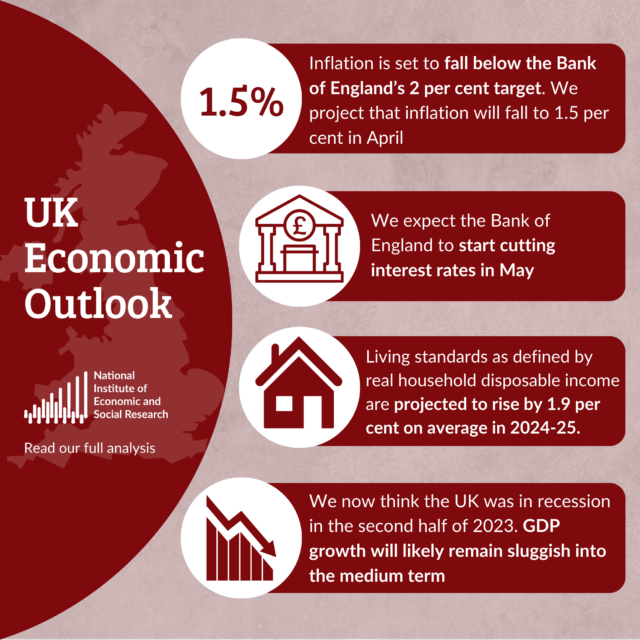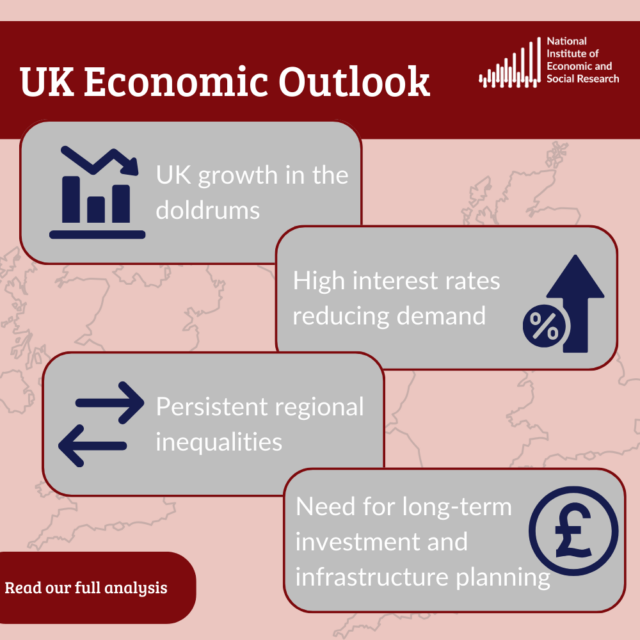Policy in the age of Global Value Chains: what is the way forward?
Earlier this month NIESR hosted a workshop entitled “Global Value Chains: Current developments and Implications for Europe”. We brought together the experts from several leading European research institutes, international organisations and the private sector to discuss various aspects of global value chains (GVCs). All contributions dealt with questions of great policy relevance, for both the UK and the other European economies.

Earlier this month NIESR hosted a workshop entitled “Global Value Chains: Current developments and Implications for Europe”. We brought together the experts from several leading European research institutes, international organisations and the private sector to discuss various aspects of global value chains (GVCs).
All contributions dealt with questions of great policy relevance, for both the UK and the other European economies. What are global value chains and why they have emerged? How are they linked to the changing patterns of global trade over time? How does the participation in GVCs influence the organisation of production, firm productivity and employment of different countries? After an intense day of presentations and discussions (which you can watch on replay following the links provided here) we hope we have come a little closer to answering some of those questions.
The emergence of GVCs is nothing more than the global phenomenon of international fragmentation of production, where different stages of production (e.g. design and R&D, production and assembly, sales and marketing) can be established in distant geographical locations. Jurgen Matthes (IW Cologne, Germany) kicked-off the workshop by providing a comprehensive overview of the drivers behind the rise of GVCs over the last three decades. He emphasized the changing patterns of trade, focusing on the emergence of China as a global player and on the so-called “Factory Europe” phenomenon which has seen as much as 15% of jobs in some Central and Eastern European linked to the manufacturing of high-tech intermediates. Jurgen noted, however, that this globalisation trend appears to have slowed down since the Great Recession. The increase in protectionism poses a further threat for the development of GVCs and, in consequence, for national competitiveness. Tariffs on intermediates products may be especially harmful for multinational companies as in their complex production processes components may cross borders several times and thus the burden of tariffs accumulates.
Another challenge is linked to the measurement of GVCs and understanding their influence on growth prospects. Value chains create linkages that cannot easily be identified within the traditional trade statistics and the relative importance of imports and exports often needs to be re-considered. For example, an increase in exports may generate only a small change in domestic value added (and therefore GDP) if exports contain a substantial amount of imported value added. Jyrki Ali-Yrkko (ETLA, Finland) presented estimates suggesting that one third of total value added in the European economy is generated through direct trade, whilst as much as two thirds is accounted for indirect trade, a component further intensified by the increasing role of intangibles, such as marketing and managerial competences or R&D investments, and digital trade. Some novel findings on GVC-related aspects of Brexit were presented, with estimates highlighting the importance of the UK as a passthrough country. The UK is more involved in GVCs both through buying from third countries (backward linkages) and selling (forward linkages) than many have so far realised. The UK can account for as much as 7% of the total value added generated by the exports of EU countries, which implies that many UK firms, depending on the terms of Brexit, will most likely face multiple tariffs and delays, and be forced to re-structure their production networks.
Adam Jakubik (WTO) also provided an overview of economic impacts brought about by GVCs advances, discussing labour market and distributional aspects. The decline in US manufacturing employment, considered one of root causes of the populist surge in America, is widely associated with the increase in import competition from China. Adam pointed to different patterns of regional impact of this trade shock when using value-added rather than gross trade data.
Sebastian Benz (OECD) presented some findings from the latest publication of the Trade in Value Added database (TiVA), which can be used to trace the origin of value added for any good or service exports. He pointed to the steady increase in the share of employment sustained by foreign final demand, a trend especially pronounced in services exports. Kaplana Dash (Economica, Austria) presented a newly developed concept for assessing company-specific aspects of sustainability along GVCs, that includes the identification and appropriate management of risks related to the ecology, corporate social responsibility and amongst others.
Cecilia Jona-Lasinio (ISTAT, Italy) presented some new empirical evidence on the nexus between GVCs participation, productivity and digitalisation. She showed that there is a robust positive statistical association between selling and buying within GVCs, and labour productivity growth at the country level. Interestingly, the impacts vary across sectors and are more pronounced in industries with more digital content. Rebecca Harding (Coriolis Technologies) discussed novel experimental methods to measure global value chains using AI-machine learning tools, that builds on existing data sources.
Robert Stehrer’s keynote lecture offered a comprehensive account of the main issues affecting the development of GVCs, with a special focus on trade policy considerations. Assessing the effects of trade policy along GVCs is not a straightforward exercise given the cumulative (or cascade) effects attached to tariffs. Moreover, as Brexit modelling challenges have proven, it also necessary to focus on the potential distortions induced by non-tariff measures (NTM). We need more research to understand the effects of NTMs on trade volumes, prices and the quality of exports. Robert also stressed the need to integrate more good quality data with existing GVCs indicators to improve the measurement of a variety of globalisation impacts (e.g. employment, R&D investment, productivity).
The Brexit debate has thrust international trade under the spotlight, highlighting many trends the general public in Britain and Europe were not necessarily aware of. It may prove both impossible and counterproductive to fight against the globalisation forces. But policymakers should make every effort so that the lessons from the past are learnt and we harness the process of internationalization to benefit the whole economy not only the lucky few (be it firms, skill groups or industries). It is thus essential that trade policy is complemented by a mix of other domestic policies that help achieve a more sustainable and socially desirable outcomes. And as we gradually gain access to better data, we need more of rigorous research to shape future policies for both Britain and Europe.
We acknowledge funding from Innovate UK and ESRC IAA scheme.






















